"Medieval" may not exactly rhyme with "Tuscany," but it's undeniable that this region tells ancient and fascinating stories through its landscapes, wines, and especially its enchanting medieval villages. These timeless jewels offer fairytale-like atmospheres, breathtaking views, and a privileged lens through which to observe the past, with city walls, towers, imposing bastions, and cobblestone streets. From the Chianti hills to the hidden valleys, exploring the medieval towns of Tuscany provides an experience that undoubtedly enriches the soul and leaves unforgettable memories. Join us on a journey to discover this treasure, from the more famous ones to those that hide unexpected surprises!
Medieval villages and towns in Tuscany: a blend of art, history, and the good life
Tuscany is one of the Italian regions with the highest concentration of medieval villages: the valleys and gentle Apennine hills are dotted with towns that have preserved their medieval structure – and charm. A true historical and cultural treasure, many of these towns are even recognized as UNESCO World Heritage sites. More than twenty Tuscan villages are also featured in the prestigious list of the Most Beautiful Villages in Italy, making this region a must-visit for those who wish to immerse themselves in the timeless atmosphere of Italian medieval life. Visiting the medieval towns of Tuscany also means discovering a perfect blend of art, history, and traditions, always accompanied by exceptional cuisine and wines. If you want to combine the pleasure of discovery with the joy of taste, this region should definitely be on your list of places to explore and experience.
An itinerary through the 5 most beautiful villages in Tuscany
For those looking for an itinerary through the most charming and iconic medieval villages of Tuscany, here are five must-see stops!
Monteriggioni
With its intact walls and towers that seem straight out of a painting, it is one of the most famous medieval villages in Italy, nestled in the beautiful Chianti Valley and also a stop on the famous Via Francigena. Don’t miss the 13th-century walkway along the walls, which offers a breathtaking view of the surrounding hills.
San Gimignano
The Sienese hills continue to offer surprises, among them San Gimignano, which certainly needs no introduction. Its 13 towers – which, in the 13th century, were said to be over 70! – rise high into the Tuscan sky, telling a story of wealth and rivalry between medieval families. A stroll through Piazza della Cisterna is an unforgettable experience. If you love towers, ancient walls, and historic buildings, a stop in this city is a must.

San Quirico d’Orcia
San Quirico d’Orcia is a gem in the heart of the UNESCO-listed Val d’Orcia, known for its medieval charm and postcard-perfect landscapes. The village is famous for the Collegiate Church of Saints Quirico and Giulitta, with its finely decorated Romanesque portals, and for the Horti Leonini, Renaissance gardens perfect for a stroll through art and nature. Not far from the town, you can admire the picturesque Chapel of the Madonna di Vitaleta, framed by cypress trees – a place that enchants both the eyes and the heart, ideal for those seeking history, culture, and unforgettable scenery.
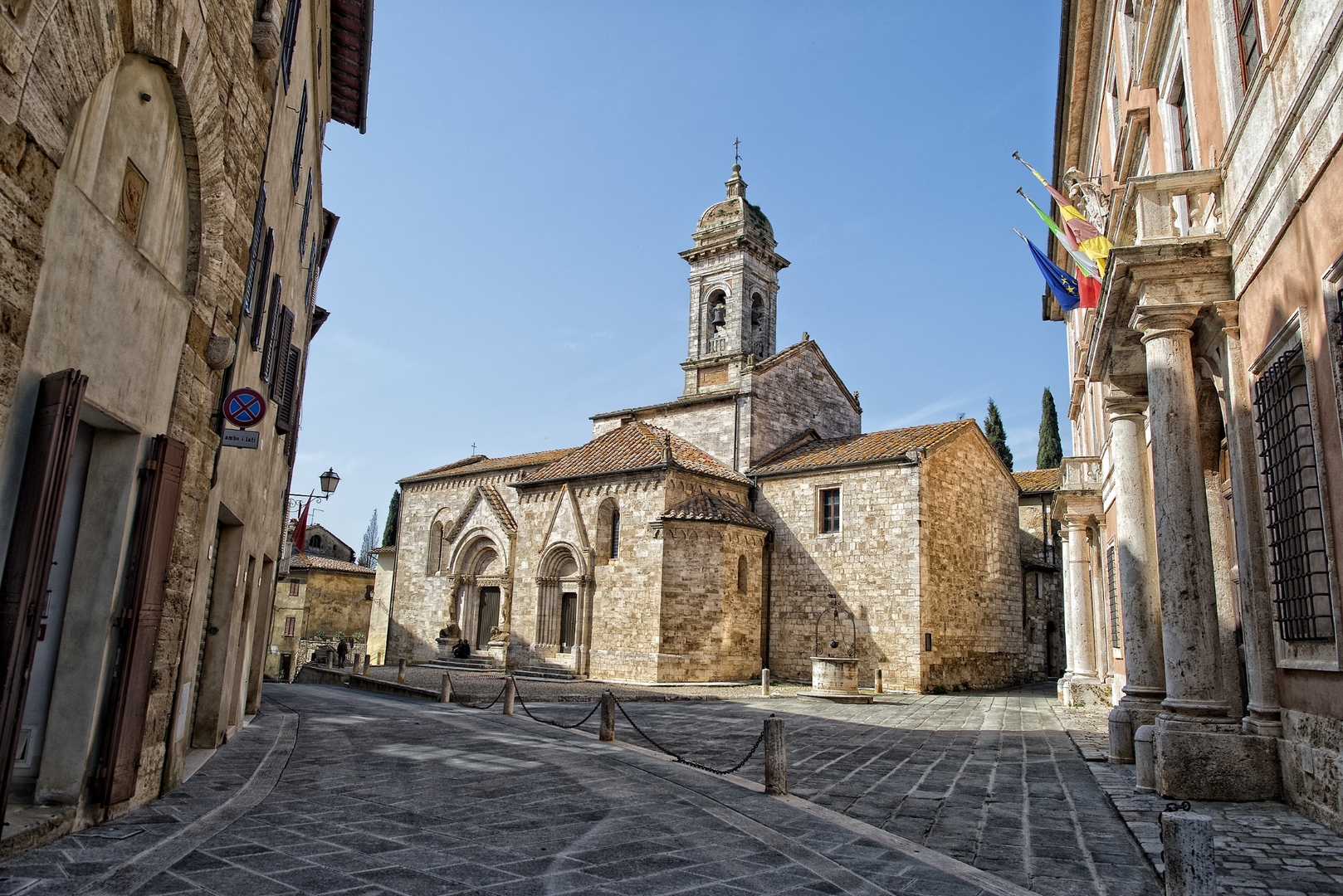
Volterra
Ancient walls, narrow cobblestone streets, imposing buildings, and fortresses – this is Volterra. An ancient Etruscan city, it offers a historic center full of charm, with the Palazzo dei Priori, the Duomo of Volterra, and the Roman Theater. Once again, there are the walls – this time Etruscan – from which you can admire the view of the surrounding countryside. Volterra is also famous for its alabaster craftsmanship, a tradition passed down through the centuries.

Cortona
Cortona, perched on a hill overlooking the Valdichiana, is one of the most charming villages in Tuscany, rich in history and culture. With its Etruscan origins, still visible in the city walls and artifacts housed at the Etruscan Academy Museum, visiting the village is like taking a dive into the past. Strolling through its cobblestone streets, you'll reach landmarks like Piazza della Repubblica, with its Town Hall, and the Sanctuary of Santa Margherita, where you can enjoy a breathtaking view of Lake Trasimeno. Cortona is also famous for its intimate atmosphere and romantic panoramas, made famous by Frances Mayes' book Under the Tuscan Sun. A place that blends art, beauty, and literary inspiration.
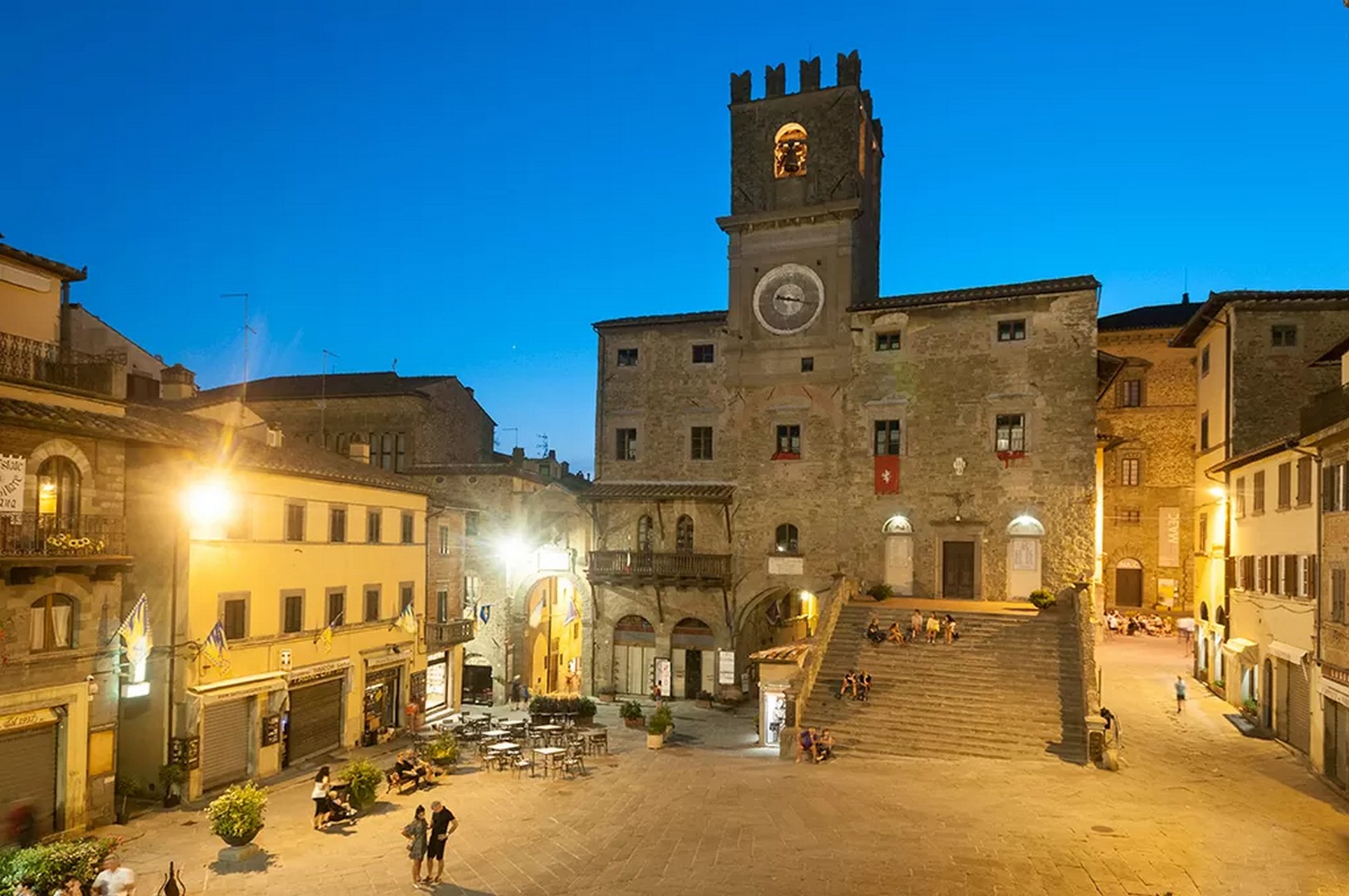
Less-known but unmissable Tuscan villages
In addition to its most famous places, Tuscany hides lesser-known treasures that are worth discovering.
Castelnuovo di Val di Cecina
A stone village perched on a hill, overlooking the wild and unspoiled landscapes of the Upper Val di Cecina, whose historic center develops in a spiral or "cluster" shape, creating a unique visual effect. Walking along its narrow cobblestone streets, you can admire stone houses that seem to cling to one another, offering glimpses of rare beauty. Beyond its historical charm, the village is surrounded by lush nature, making it ideal for hikes and scenic routes.
The area is also known for its geothermal activity: just a few kilometers from the center is Larderello, with its fumaroles and the Geothermal Museum, which tells the story of a unique aspect of the region. Castelnuovo di Val di Cecina is therefore an ideal destination for those who want to discover a more authentic and less touristy Tuscany.
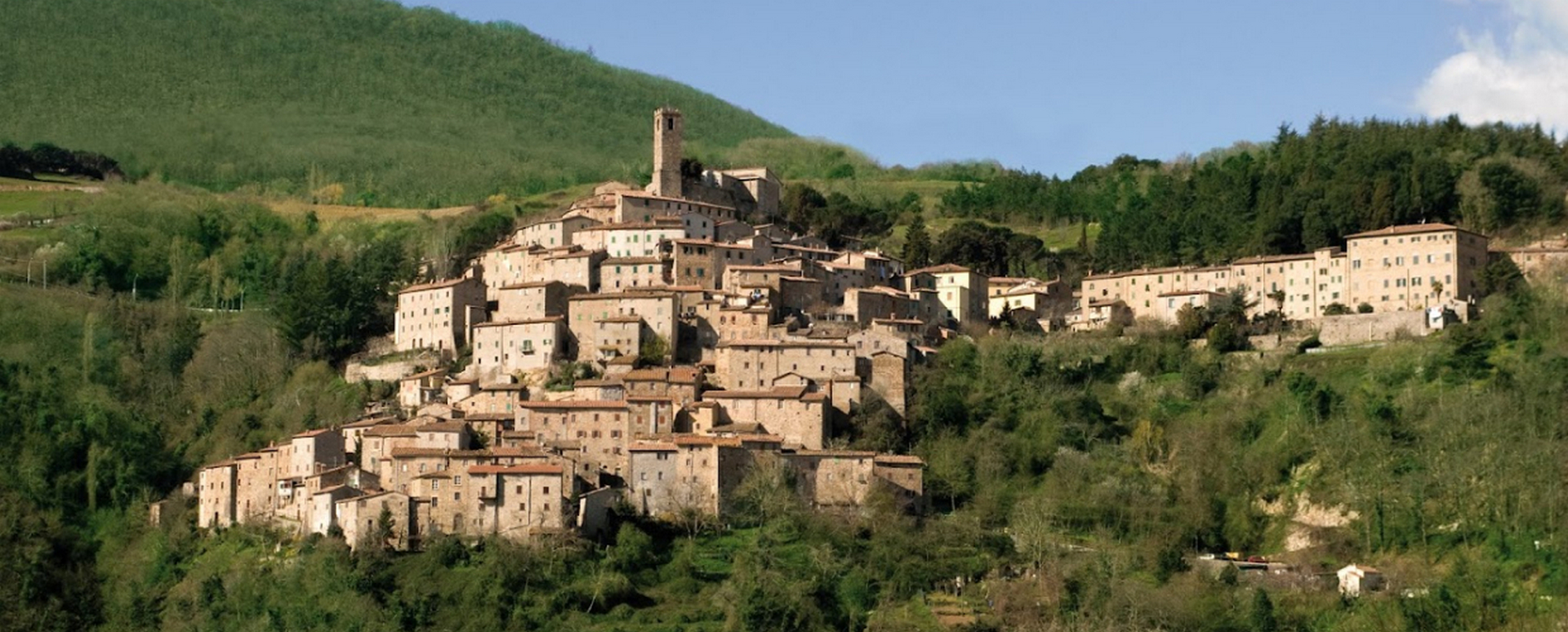
Certaldo
We’re talking about the birthplace of Giovanni Boccaccio, a medieval gem nestled in the heart of Valdelsa. Its historic center, known as Certaldo Alto, can be reached via a charming funicular and stands out for its brick streets and tower-houses that preserve the charm of the past. Among the main attractions are Palazzo Pretorio, with its frescoes and heraldic coats of arms, and Casa Boccaccio, now a museum dedicated to the famous author of The Decameron.
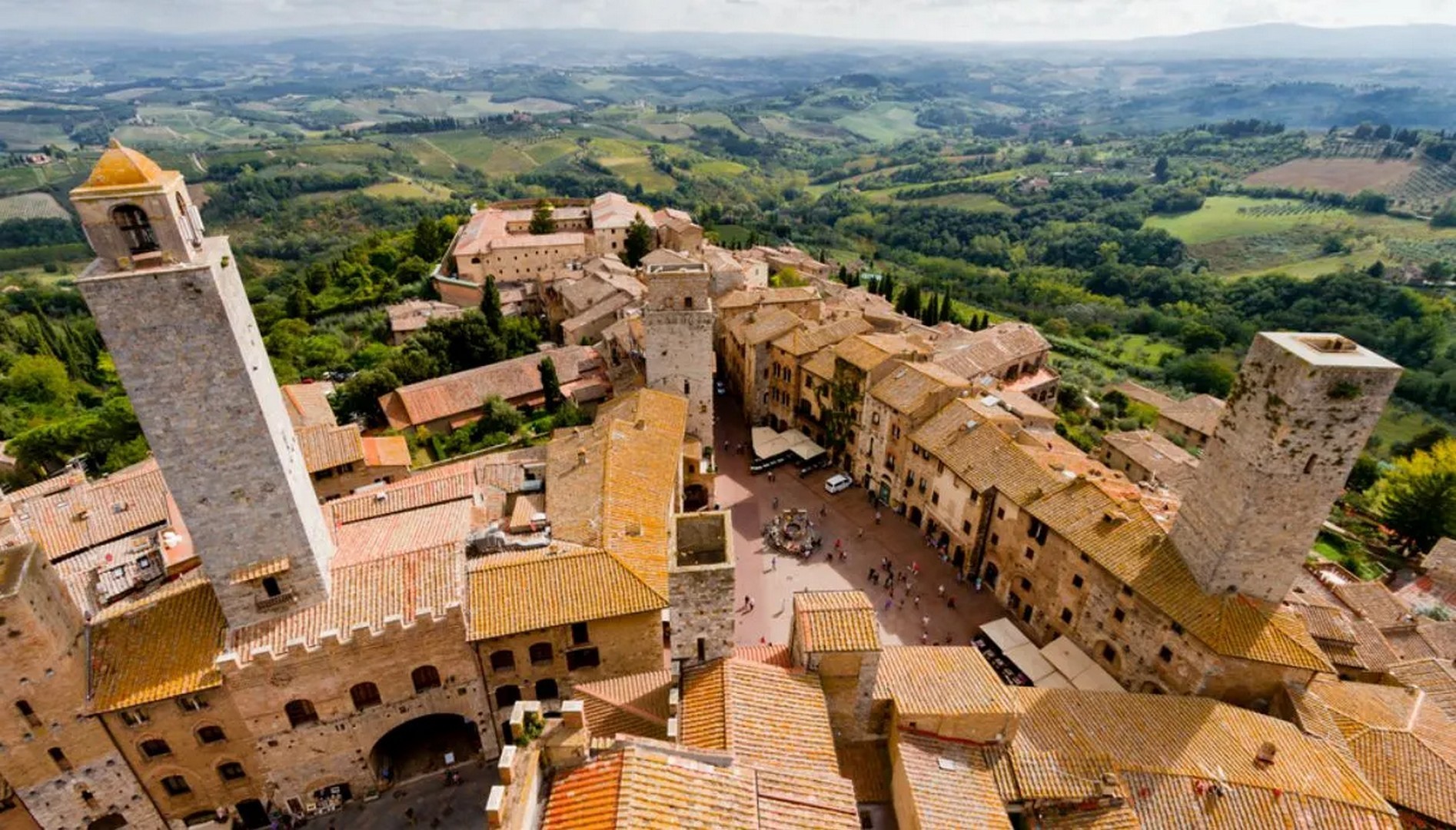
Castellina in Chianti
Castellina in Chianti is a village in the heart of Chianti, as its name suggests, where history and winemaking tradition come together. Its historic center, with the evocative Via delle Volte, a covered medieval passage, offers enchanting views and a timeless atmosphere. Don't miss the Chianti Senese Archaeological Museum and the Rocca with its panoramic tower, where you can admire the surrounding hills. In short, it's the perfect place for those who want to immerse themselves in the iconic landscapes of Tuscany, perhaps while enjoying a good glass of wine.
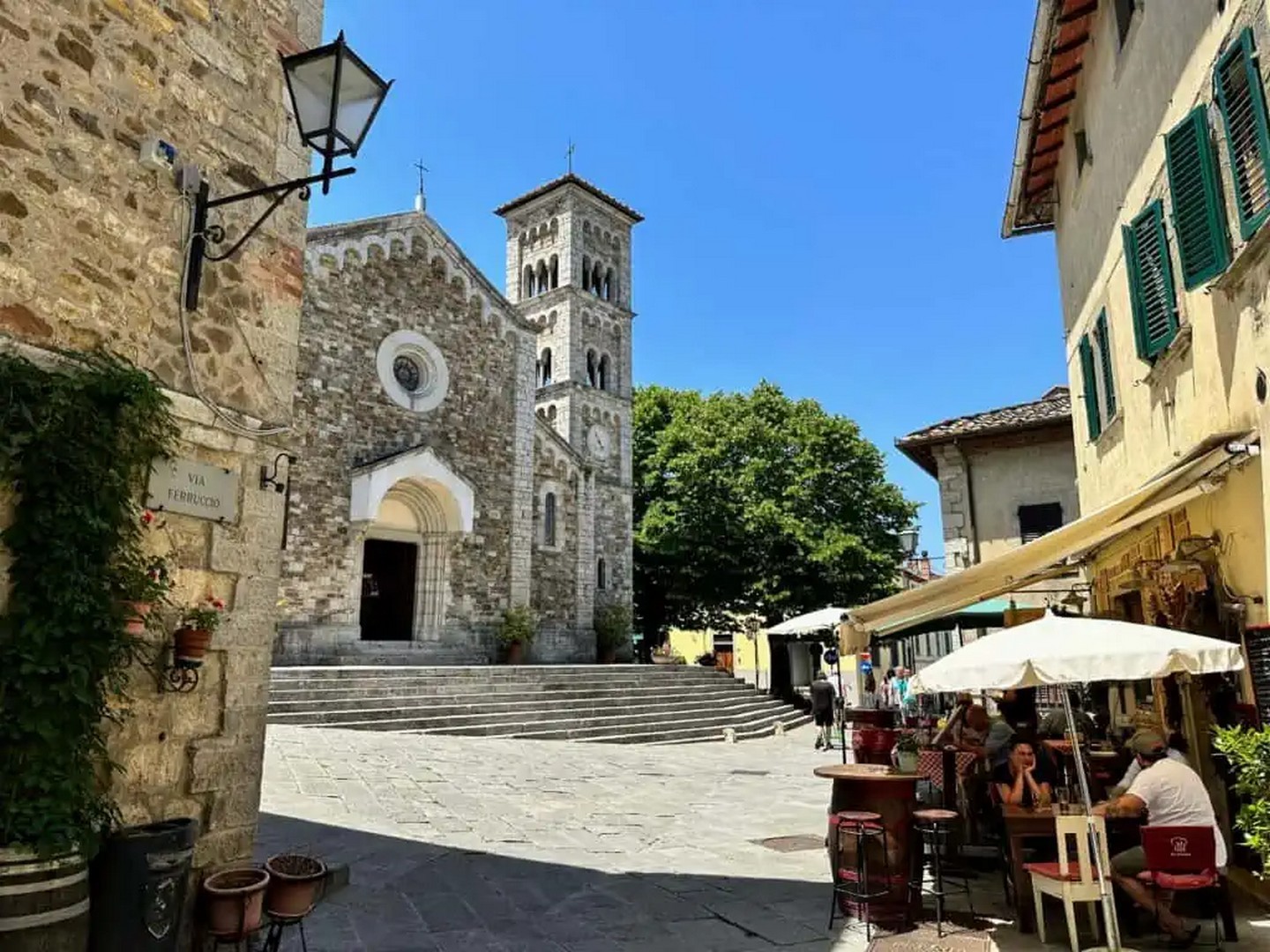
Radicofani
Situated on a hill in the Val d'Orcia, at the foot of Mount Amiata, about 70 km from Siena, this medieval village is home to a splendid Fortress, a symbol of medieval defense. This fortification, towering over a volcanic height, offers breathtaking views that span across the Amiata, Lake Trasimeno, and even Lake Bolsena. Radicofani is also linked to the legendary figure of Ghino di Tacco, an Italian "Robin Hood," who made the village famous with his exploits. Strolling through its cobblestone streets, you’ll discover ancient churches and picturesque corners, while the surrounding area offers enchanting landscapes and a taste of authentic Tuscany.
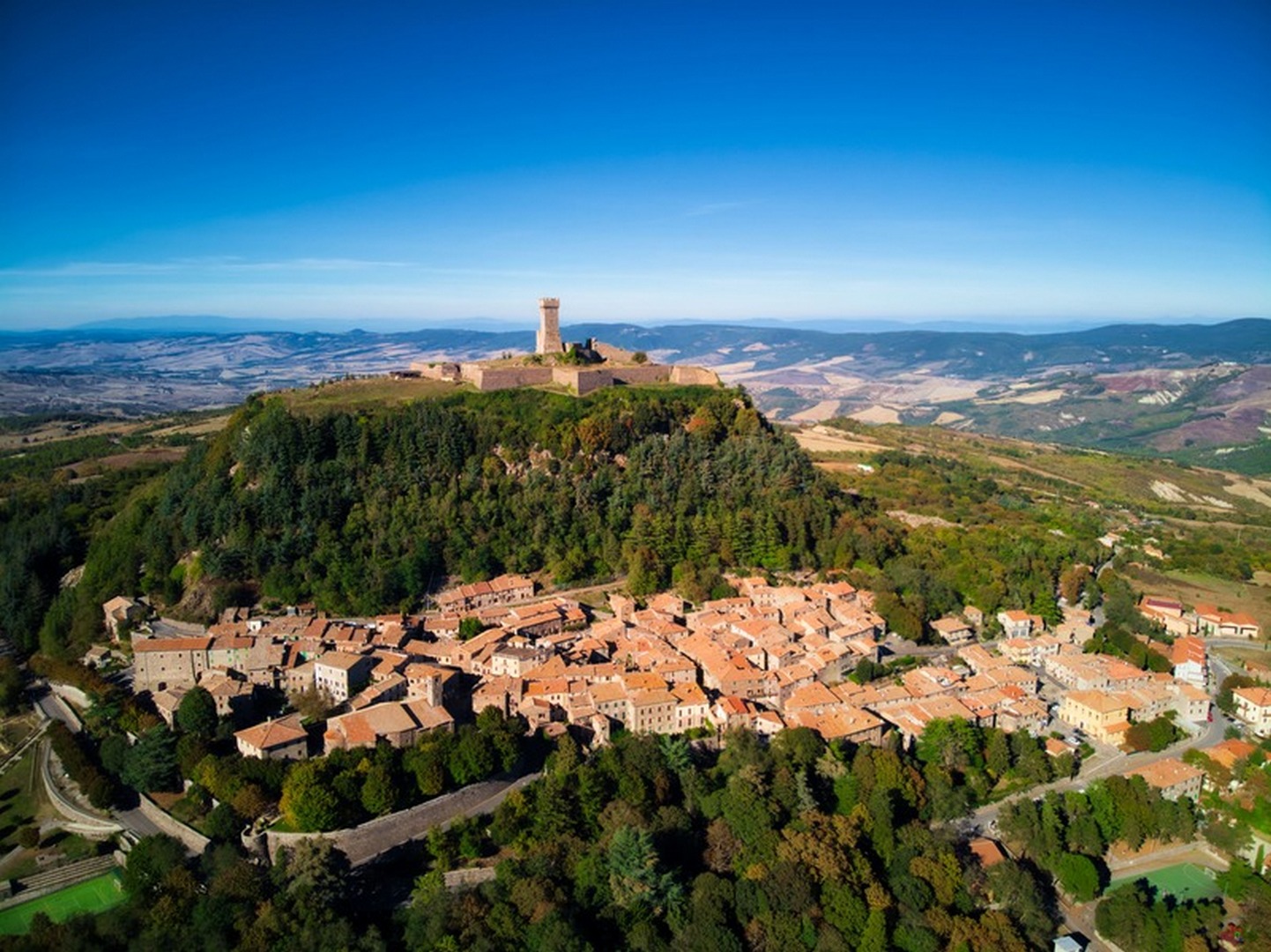
Campiglia Marittima
Campiglia Marittima is a charming medieval village nestled between the sea and the Tuscan hinterland, surrounded by hills and Mediterranean scrub. Enclosed by walls, the village retains a timeless atmosphere with picturesque artisan shops and houses arranged in a semi-circle. Notable sites include the Palazzo Pretorio, which reflects the rich history of the village, and the ancient medieval churches, such as the Pieve di San Giovanni. Don’t miss a stroll through its cobblestone streets, which offer stunning views and a timeless atmosphere. Nearby, the Val di Cornia offers breathtaking panoramas and a rich array of natural and cultural trails.
Which is the most beautiful medieval village in Tuscany?
Impossible to answer! Each village has its own unique charm, and the answer to this question depends on the experiences and emotions one seeks. Monteriggioni, with its imposing walls, is perfect for those who want to relive the atmosphere of a fortified village, while San Gimignano enchants with its towers and stunning views. However, lesser-known places like Radicofani, Certaldo, and Castelnuovo di Val di Cecina can be surprising, with their authenticity and uniqueness. Not to mention the villages that haven’t been included in the list, such as Montepulciano, Montalcino, Poppi, Pitigliano, or even Pienza, if the Middle Ages feel a bit too confined and you prefer Renaissance charm.
Where to stay to experience medieval Tuscany
Our advice is to open the map and let yourself be guided and surprised by what Tuscany has to offer. For those who want to fully immerse themselves in the magic of this region and enjoy the journey with maximum comfort, staying at one of our estates is the ideal choice. In addition to offering relaxation experiences and tastings of excellent wines, these properties serve as a strategic starting point to explore the surrounding villages.
Near Siena, the Relais Villa Grazianella at Fattoria del Cerro, located in Acquaviva, will be ready to welcome you. This is the largest private producer of Vino Nobile di Montepulciano. From here, you can explore the charm of villages like Montepulciano and Chiusi, as well as taste the renowned Vino Nobile di Montepulciano through a guided tasting.
La Poderina, just a few steps from the Val d'Orcia, offers a prime location for visiting Radicofani, Pienza, or other medieval villages in this area rich in charm and history. Have the guided tours of the villages tired you out? You can refresh yourself with a wine tasting of the estate’s wines or take a guided tour of the beautiful vineyards.
Finally, the Tenuta di Monterufoli, nestled in the untouched nature of the homonymous Natural Park, is the perfect base for exploring Castelnuovo di Val di Cecina and Volterra. After some rest and enjoying a tasting of the estate’s wines, you can continue your exploration by visiting the ancient lignite and magnesite mines.
As we've seen, the medieval villages of Tuscany are not just places to visit, but true experiences to live. Have you already decided where to start?
